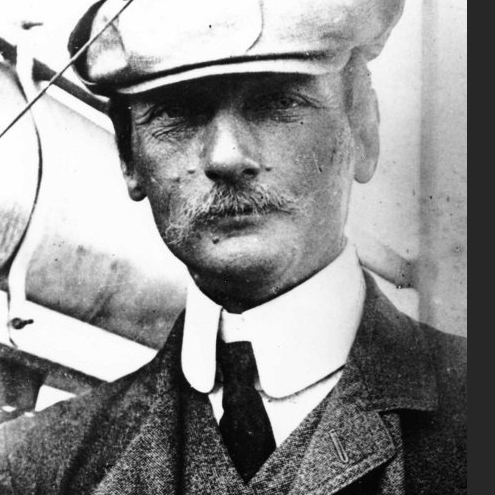Bird flight
In 1889 German Otto Lilienthal (*1848) published his famous book ‘Der Vogelflug als Grundlage der Fliegekunst’ (‘Bird flight as the Basis for Aviation’). From 1891 on he achieves about 2500 glides from a small hill at Lichterfelde, near Berlin, hanging under a large wing made by himself. His experiments will finally cause his death on Monday August 10 1896.

Fig. 6-3
Glide from a hill at Lichterfelde, photographer unknown
Saturday June 29 1895
The American brothers Wilbur (16/4/1867-30/5/1912) and Orville (19/8/1871-30/1/1948) Wright, of Dayton, Ohio, bicycle repairers by profession, are inspired by a photo of Otto Lilienthal with his glider. They benefit and profit by his scientific research of the gliding technics. They carry out a large number of tests with gliders and invent a solution for the problem of the propulsion, a motor.
Also their countryman professor Samuel Pierpont Langley, secretary of the semi-public Smithsonian Institution in Washington, experiments with flying. He is subsidised by the American government to build a manned airplane. On December 8 1903 his ‘Aerodrome’ is catapulted for the second time from a houseboat on the Potomac River near Washington and again dives into the river, immediately after take-off. The trials with the totally destroyed airplane of Langley, on which $ 70.000 have been spent, have failed miserably.
Only nine days later, on December 17 1903 10:35, the great adventure of aviation actually begins when Orville Wright, younger brother of Wilbur, covers 36,50 metres in a 12 seconds’ flight in the dunes of Kill Devil Hills at Kitty Hawk, North Carolina, U.S.A., with a biplane Flyer I equipped with a 12 HP-motor designed by their only employee Charles E. Taylor. This historical ‘leap’ is officially the first controlled flight by a ‘heavier-than-air’ machine.

Fig. 6-4
Spectacular photo of the first motorized flight on December 17 1903

